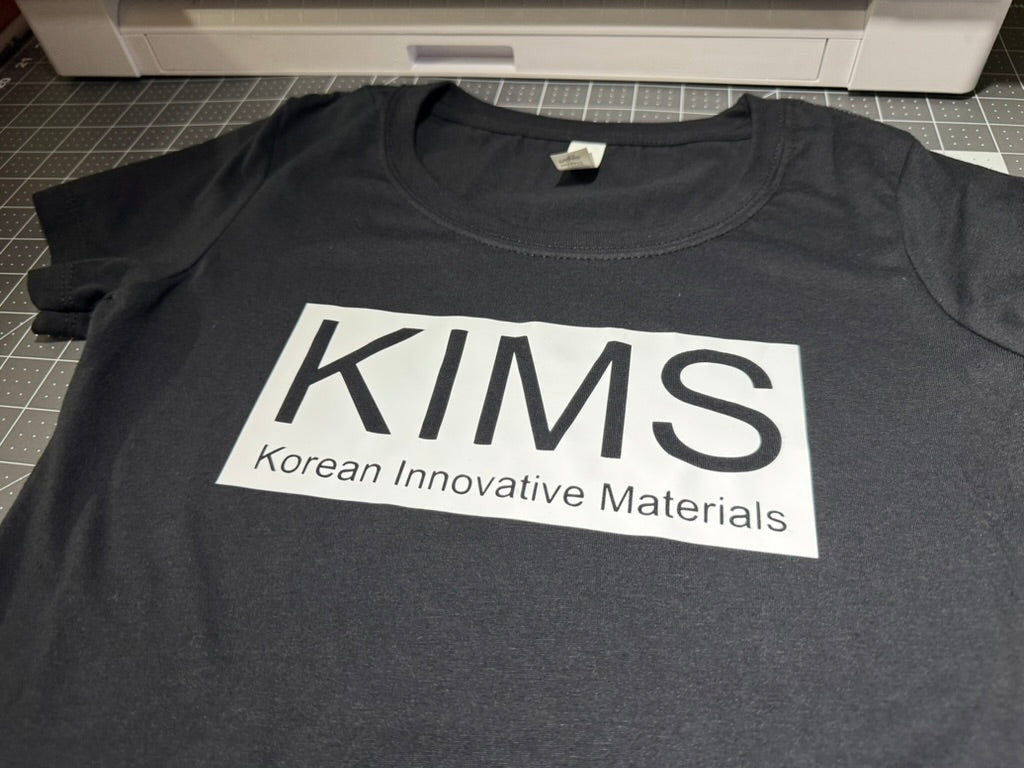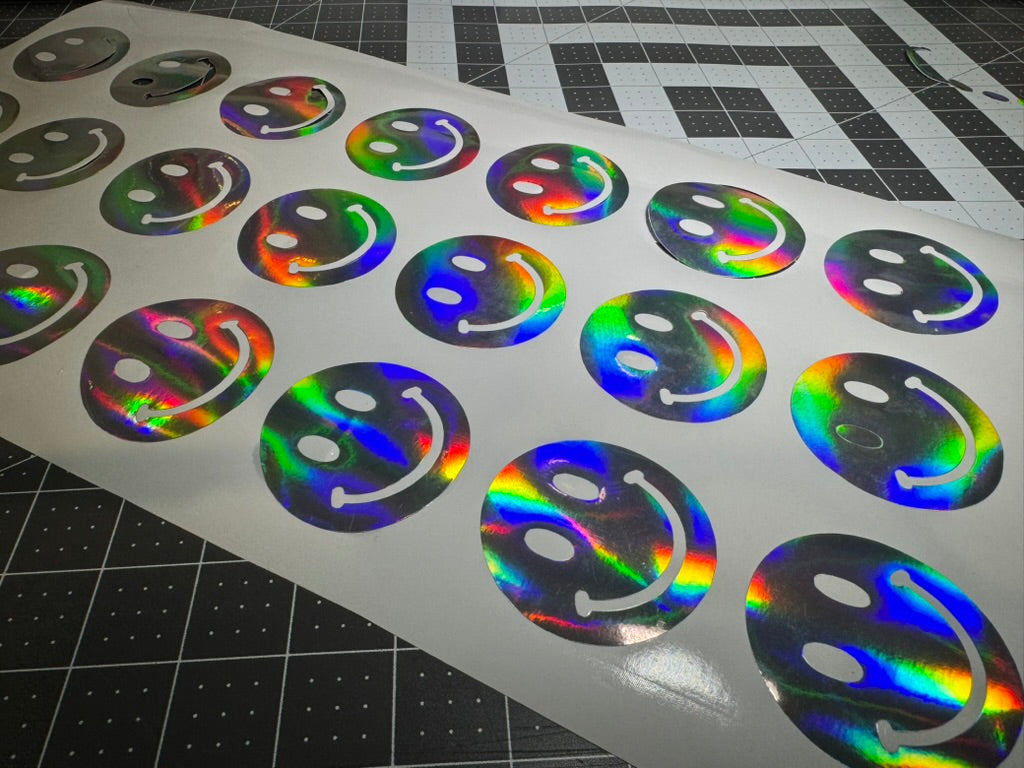Introduction
Heat transfer vinyl (HTV) and custom stickers are versatile materials used in crafting, custom apparel, and branding projects. Proper storage and handling directly affect how well these materials perform. When stored incorrectly, vinyl can curl, lose adhesion, or become damaged before you even start your project. This guide provides practical tips to help you maintain the quality of your materials and avoid common storage problems.
Why Proper Storage Matters
Heat transfer vinyl and custom stickers contain adhesives and coatings that respond to temperature, humidity, and light. When exposed to poor conditions, these materials can warp, curl, or lose their sticking power.
Common storage problems include faded colors, curling edges, and adhesive failure. For example, HTV stored in direct sunlight might lose its vibrant colors, while stickers kept in humid areas could bubble or peel during application.
Improperly stored vinyl can also become difficult to work with. It might be harder to cut cleanly, weed properly, or apply smoothly to your project. This leads to wasted materials and frustrating results.
-
Material Waste: Poorly stored vinyl often becomes unusable
-
Project Delays: Damaged materials require reordering
-
Inconsistent Results: Storage issues can cause transfer failures
Best Environment For Heat Transfer Vinyl And Custom Stickers
The ideal storage environment keeps your HTV and custom stickers in perfect condition. Temperature, humidity, and light exposure all affect how well these materials work when you're ready to use them.
|
Storage Factor |
Ideal Conditions |
Problems to Avoid |
|---|---|---|
|
Temperature |
65-75°F (18-24°C) |
Extreme heat or cold |
|
Humidity |
40-60% |
High moisture or very dry air |
|
Light |
Dark or dim areas |
Direct sunlight, bright lights |
1. Control Temperature
Heat transfer vinyl works best when stored at room temperature. Hot environments can make adhesives too sticky, while cold temperatures might make vinyl brittle and prone to cracking.
Signs of temperature damage include:
-
Vinyl that feels unusually soft or sticky
-
Material that cracks when unrolled
-
Adhesive that leaves residue on storage surfaces
Keep your vinyl away from heaters, radiators, and cold garages or basements where temperatures fluctuate drastically.
2. Monitor Humidity
The moisture in the air affects how well adhesives work. Too much humidity can weaken adhesives, while very dry conditions might make vinyl curl or become brittle.
You can check humidity with an inexpensive digital hygrometer from a hardware store. If your storage area tends to be damp, consider using a small dehumidifier or silica gel packets in your storage containers.
3. Minimize Direct Light Exposure
UV light breaks down vinyl and adhesives over time. Storing materials in dark places or opaque containers helps prevent fading and degradation.
Good storage locations include drawers, cabinets, or bins kept away from windows and bright overhead lights. If you notice colors fading or vinyl becoming brittle, light exposure may be the culprit.
Choosing The Right Containers And Organizers
The right storage containers protect your vinyl and stickers from dust, light, and humidity changes. Different options work better depending on how much material you have and your available space.
1. Use Airtight Bins
Airtight containers seal out moisture and dust, keeping your materials in better condition. Look for bins with rubber gaskets around the lid and secure latches that create a true seal.
Features of good storage containers:
-
Secure lids that lock or snap tightly
-
Clear sides for easy viewing (if kept away from light)
-
Stackable designs for efficient use of space
-
Sizes that fit standard vinyl widths (12", 15", 20")
Plastic bins work well for storing multiple rolls or sheets together, while smaller containers can hold specialty materials or partially used rolls.
2. Label Each Roll
Labeling helps you quickly find what you need without handling every roll. It also helps track how long you've had each material.
Information to include on labels:
-
Color name and brand
-
Material type (standard HTV, glitter, reflective)
-
Date purchased
-
Size/dimensions
Avoid placing labels directly on the vinyl surface. Instead, attach tags to the roll core or use removable labels on the protective backing.
3. Keep Similar Materials Together
Different types of vinyl and stickers can affect each other when stored together. For example, glitter vinyl might shed particles onto smooth vinyl, causing texture issues.
Group your materials by type:
-
Standard heat transfer vinyl
-
Specialty finishes (glitter, reflective, holographic)
-
DTF transfers
-
Custom stickers and decals
This organization system prevents material contamination and makes finding specific items easier when starting a project.
How To Store DTF Transfers And Specialty Vinyl
Direct-to-film (DTF) transfers and specialty vinyl require extra care because of their unique properties. DTF transfers have ink and adhesive layers that can be damaged by pressure or temperature changes. Specialty vinyl like reflective or glitter materials has textured surfaces that need protection.
1. Handle Reflective And Glitter Material
Reflective and glitter vinyl have special surface treatments that can be damaged by improper storage. These materials often cost more than standard vinyl, making proper storage even more important.
For reflective vinyl:
-
Store flat or in very loose rolls to prevent creasing
-
Keep away from dust that can dull the reflective surface
-
Avoid stacking heavy items on top
For glitter vinyl:
-
Use protective sleeves to prevent glitter transfer
-
Store separately from smooth vinyl
-
Handle with clean hands to avoid oils affecting the adhesive
2. Protect DTF Transfers
DTF transfers need special handling to maintain their print quality and adhesive properties. Unlike regular HTV, these transfers have multiple layers that can be affected by pressure and temperature.
Best practices for DTF storage:
-
Store flat rather than rolled
-
Place parchment paper between transfers
-
Keep in a cool, dry place away from direct light
-
Use rigid folders or sleeves for protection
DTF transfers typically have a shelf life of 3-12 months when stored properly. If you can't maintain ideal storage conditions, try to use them within 30 days for best results.
Tips For Handling Partially Used Rolls
Partially used vinyl rolls present special challenges. The exposed edges can collect dust or start to curl, and improper re-rolling can create permanent creases or stretching.
1. Re-Roll Gently
When you finish using a roll of vinyl, proper re-rolling helps maintain its condition for future use.
Steps for re-rolling vinyl:
-
Place the roll on a clean, flat surface
-
Align the vinyl edge carefully with the roll
-
Roll slowly with even pressure from both hands
-
Check for air bubbles or wrinkles as you go
-
Secure the end when finished
Avoid pulling or stretching the vinyl as you roll it. Tension can distort the material and affect how it cuts or applies later.
2. Secure Loose Ends
Keeping the end of the roll secure prevents unraveling and exposure to dust or humidity.
Effective methods to secure vinyl rolls:
-
Low-tack painter's tape (won't leave residue)
-
Plastic clips designed for vinyl storage
-
Soft elastic bands (not rubber bands, which can degrade)
The best method depends on how frequently you use the material. Tape works well for long-term storage, while clips allow for easy access if you use the vinyl often.
Extending The Shelf Life Of HTV
Most heat transfer vinyl has a shelf life of 1-2 years when stored properly. However, this timeframe can be shorter or longer depending on storage conditions and material quality.
1. FIFO Inventory
The First-In-First-Out (FIFO) method helps ensure you use older materials before they expire. This simple inventory system keeps your supplies fresh and reduces waste.
How to implement FIFO:
-
Label each roll with the purchase date
-
Store newer materials behind or under older ones
-
Always take from the front or top of your storage
-
Check dates monthly to identify aging stock
This system works well for both home crafters and small businesses that maintain a vinyl inventory.
2. Avoid Excess Heat Sources
Even if your room temperature is appropriate, local heat sources can create hot spots that damage vinyl. Being aware of these sources helps you choose better storage locations.
Common heat sources to avoid:
-
Heating vents and radiators
-
Electronic equipment that generates heat
-
Windows that receive direct sunlight
-
Lamps and overhead lighting that produce warmth
Keeping your vinyl at least three feet away from these heat sources helps maintain consistent temperature around the material.
Safeguarding Custom Stickers From Damage
Custom stickers have different storage needs than heat transfer vinyl. Their pressure-sensitive adhesives and printed surfaces require special handling to prevent damage.
1. Keep Stickers Flat
Flat storage prevents curling and adhesive issues that can make stickers difficult to apply smoothly.
Flat storage options:
-
Document sleeves or sheet protectors
-
Folders with rigid covers
-
Photo storage boxes with dividers
-
Flat drawers with smooth surfaces
Avoid folding or rolling stickers whenever possible, as this can create permanent creases that affect how they adhere to surfaces.
2. Use Release Liners
Release liners protect the adhesive side of stickers until you're ready to use them. If the original liner becomes damaged, you can replace it with alternatives.
Effective liner materials:
-
Silicone-coated paper (most common)
-
Parchment paper (good temporary option)
-
Commercial release liners (available at craft stores)
Always handle stickers by the edges or liner to avoid fingerprints or oils on the adhesive, which can reduce sticking power.
Simple Steps To Prevent Common Mistakes
Many storage problems come from simple handling mistakes. Being aware of these issues helps you avoid damaging your materials.
1. Avoid Sharp Contact
Vinyl and stickers can be easily damaged by sharp objects. Even small scratches or punctures can affect how the material cuts or transfers.
Common sources of damage:
-
Uncovered craft knives and scissors
-
Jewelry or watches while handling materials
-
Rough work surfaces with splinters or chips
-
Long fingernails during weeding or application
Creating a dedicated workspace with smooth surfaces and proper tool storage helps reduce accidental damage.
2. Do Not Stack Too High
Excessive weight from stacking can flatten rolls or cause adhesives to bond where they shouldn't.
Guidelines for stacking:
-
Vinyl rolls: no more than 3-4 high
-
Sticker sheets: limit to 10-12 per stack
-
DTF transfers: 3-5 maximum with protective sheets between
If materials show signs of compression like flattened rolls or stickers sticking together, reduce stack height and add rigid dividers between items.
Where To Go From Here For Reliable Materials
Proper storage practices help maintain the quality of your heat transfer vinyl and custom stickers. By controlling temperature and humidity, using appropriate containers, and handling materials correctly, you can extend their usable life and achieve better results in your projects.
Quality materials respond better to proper storage and handling. KIMS Direct offers premium heat transfer vinyl, custom stickers, and specialty materials designed for durability and consistent performance. Their advanced formulations cut more precisely and weed more easily, helping you create professional-looking designs with less frustration.
For heat transfer vinyl, custom stickers, and DTF transfers that maintain their quality when stored properly, visit KIMS Direct's collection.
Frequently Asked Questions About HTV And Sticker Storage
How do I store HTV vinyl after weeding?
Store weeded HTV designs flat between sheets of parchment paper or non-stick carrier sheets until you're ready to apply them, keeping them dust-free and preventing the adhesive from sticking to unwanted surfaces.
What is the shelf life of properly stored heat transfer vinyl?
Properly stored heat transfer vinyl typically remains usable for 1-2 years, though premium materials from quality suppliers may last longer when kept in ideal conditions away from heat, humidity, and light.
Are plastic tubes or paper tubes better for storing vinyl rolls?
Plastic tubes provide better protection against moisture and environmental changes than paper tubes, making them the preferred choice for long-term storage of vinyl rolls, especially in areas with variable humidity.







